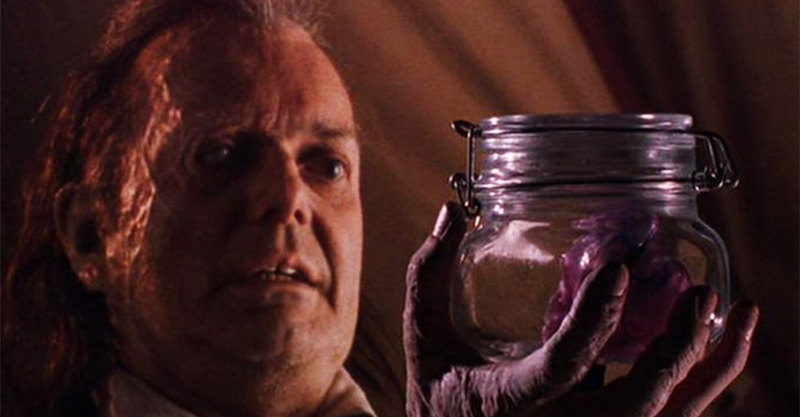As any movie fan knows, 1939 was a very good year for Hollywood. Not only did theaters show eventual Best Picture winner “Gone with the Wind,” but there was also the genre-defining Western “Stagecoach,” the memorable musical “The Wizard of Oz,” the stylish comedy-romance “Ninotchka,” the sentimental blockbuster “Goodbye, Mr. Chips,” Frank Capra’s “Mr. Smith Goes to Washington,” the Bette Davis drama “Dark Victory,” the romantic comedy “Love Affair,” and literary adaptations “Wuthering Heights” and “Of Mice and Men”—all of which were nominated for Best Picture.
Overlooked—and completely, I might add—was the Henry King-directed Western “Jesse James,” a color film starring the swashbuckling Tyrone Power as the title character and Henry Fonda as his brother, Frank. Horse opera star Randolph Scott also appears as a local lawman, while fans of old-time movies will recognize a lot of other familiar faces—like John Carradine (“Stagecoach”), who plays the “coward” Bob Ford, or Jane Darwell, who won an Oscar for her performance as Ma Joad in “The Grapes of Wrath.”
The original screenplay from Nunnally Johnson (“The Grapes of Wrath,” “The Dirty Dozen”) hits a few of the historical touchstones—like the first broad-daylight bank robbery, the gang’s fateful attempt in Northfield, Minn., and the back-shooting by Robert Ford. But Johnson has an axe to grind, too, and in his revisionist version of the James gang exploits, the transcontinental railroad is the culprit responsible for Jesse and Frank’s descent into crime. The railroad’s carpetbagging emissaries had been cheating farmers out of their property to obtain rights-of-way (and make a huge profit selling off the rest), and when they try to do that to Ma James, well, the boys don’t take to kindly to it. Pretty soon they’re being framed, and things escalate into a killing, and suddenly they’re on wanted posters and moving from place to place, just a step ahead of the law.
There’s no mention of the boys’ riding as Confederate guerillas during the Civil War and just naturally carrying on their raids after the war ended—the real way their life of crime began—but at least the film accurately has them robbing trains, stagecoaches, and banks. And Jesse’s love interest and wife plays a big role, though there’s no indication that “Zee” (Nancy Kelly) was really Jesse’s cousin. And while a sympathetic newspaper editor helped the James brothers plead their case in the court of public opinion, here he’s also related.
Still, such combinations of fact and fancy are typical of Hollywood, as is the romanticized treatment of an outlaw. And as films from this era go, “Jesse James” does a fairly good job of minimizing melodrama, even though the rise-and-fall structure could have made it difficult. None of the performances are Oscar-worthy, though, and the script is solid but unspectacular—all of which helps to explain why “Jesse James” might have been overlooked when it first played in theaters.
“Jesse James” has a runtime of 106 minutes and is not rated, though it would probably merit a PG rating today for Western violence.
Video:
“Jesse James” is one of those films from the Golden Age of Hollywood that you wish were filmed in widescreen instead of the 1.37:1 Academy ratio (presented here as 1.33:1). The cinematography is so impressive and the color reproduction and suggestion of depth so amazing that you can’t help but wish the screen could be stretched to capture more of the same. Prior to this release “The Searchers” was the release that I considered the benchmark for catalog Westerns, but I have to say that the video quality of “Jesse James” may even be a little better. All of the flaws and flickers and flecks of dirt have been removed, and during the digitalization process all of the noise has been converted to light grain.
I can already picture those self-righteous “videophiles” reviling this title for its “overprocessing,” because the level of grain is SO slight in most scenes that you’d swear you were watching a contemporary film. Only the 1.33:1 ratio tips you off . . . well, that and a style of filmmaking that’s unmistakably Old Hollywood. There IS one scene where the DNR seems to have created some blurring on a cavalry officer, but for the most part the noise reduction has been judiciously applied, and I saw no other problems from the AVC/MPEG-4 transfer. As far as I’m concerned this is a sweet-looking picture.
Audio:
The featured audio is a rich-sounding English DTS-HD MA 5.1 that offers some nice logical movement across the sound field and dialogue that’s given a wider spread across the front speakers than some catalog transfers. The original Mono is spruced up for an English DTS-HD MA 1.0 option, and there are additional audio options in French DTS 5.1 and Spanish Dolby Digital 1.0, with subtitles in English SDH, French, and Spanish.
Extras:
The only bonus features are the original trailer and a pair of Fox Movietone News clips: “Jesse James at the Roxy” and “Hollywood Spotlight.” Despite their brevity they’re fun to watch.
Bottom line:
This is no B Western. Filmed in color at a time when the majority of movies were still shot in black and white to save money, “Jesse James” has rich-looking production values and a story to tell that borders on the mythic . . . or the demythologized. In this, the filmmakers couldn’t decide. Does it hurt the film? A little. But that’s Hollywood.


